
A tour of a Champagne cellar
Where to start?
I guess most folks, like us, who have embarked on a road trip of the Champagne region of France, also plan to visit a Champagne house.
So where do you start, well the obvious choices are to stay in Reims, Epernay, or the rather quaint Ay. Reims is the 'capital' of the region with houses such as G.H. Mumm, Krug, Piper-Heidsieck & Verve Clicquot to name but a few.
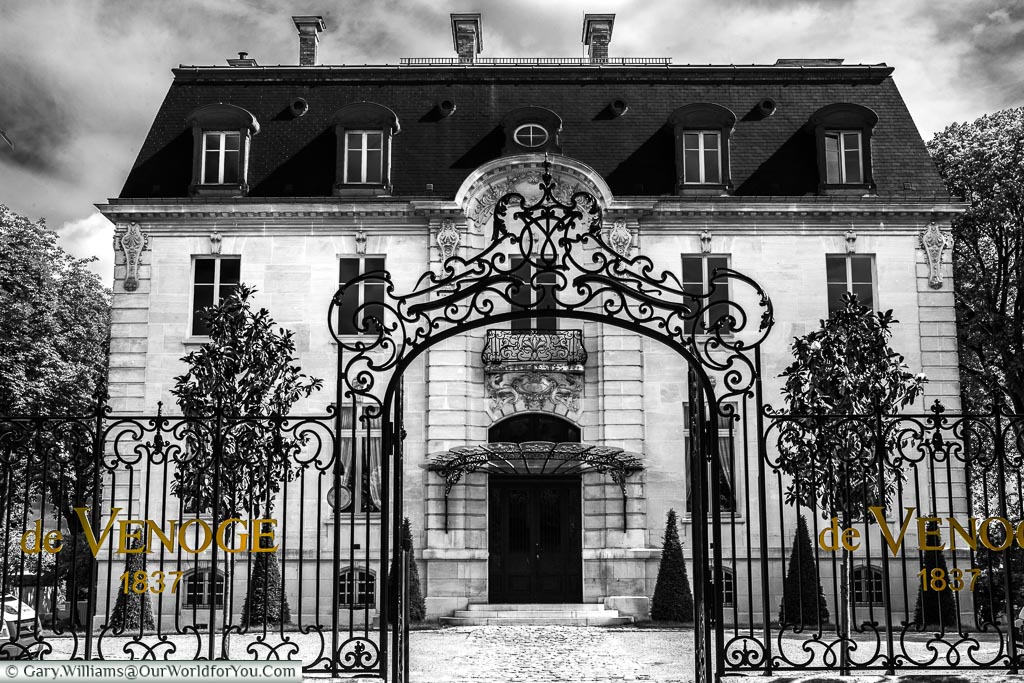
Epernay is another nice town with plenty of restaurants and home to the Avenue de Champagne, with houses such as Moët et Chandon, Mercier & Perrier-Jouët included in it's ranks.
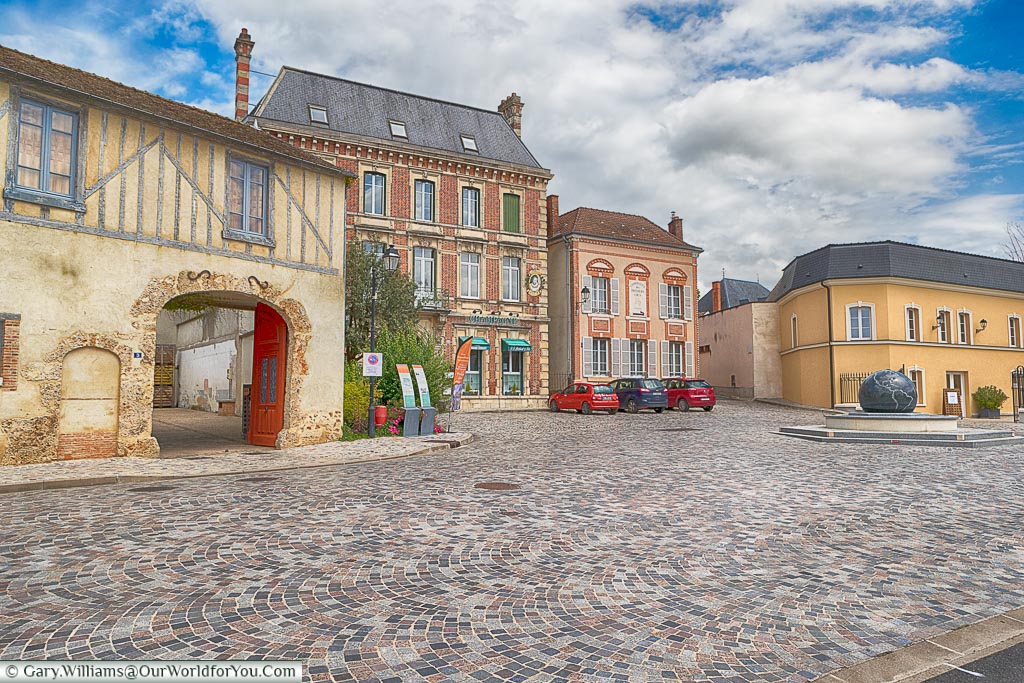
Then there is the beautiful town of Ay, a lot smaller than the other two towns but very picturesque, Ay is home to Bollinger, and many more.
A helpful guide
If like us, you love visiting different regions of France then this Michelin guide will definitely assist in your planning.
We used a previous version of this book to plan our eastern France road trips, now you can grab the revised copy.
So you make your choice
As we were staying at Reims it was a choice of which producer we would select. We chose G.H. Mumm, which was relatively close to the centre of town (20 minute walk according to Google), and booked our English tour.
There are different choices, but in essence the tour is the same, it's just the Champagnes you get to taste at the end that is varied.
As Janis & I wanted to understand the subtle differences in the grape varieties we opted for the 'En Noirs & Blancs experience'. Which is Mumm Blanc de Blancs (100% Chardonnay) and Mumm Blanc de Noirs (100% Pinot Noirs) Champagnes.
Arrival at the cellars
G.H. Mumm winery is situated along the rue du Champs de Mars. Maison Mumm has several buildings along the rue, but the cellar tour is clearly marked.
After being ushered downstairs to a plush reception area, you are now cosseted by brand Mumm, and Cordon Rouge, so yes there's a lot of red.
Advice to heed - dress warmly
Okay, so it's not an artic expedition, but it is cool, expect 10°C/50°F so a jacket is a good idea.
The tour progresses at a reasonable pace during the 45 minutes to 1 hour allocated.
If you want to take photos you'll need to brush up on those photography skills on shooting in low light, and at speed.
As you progress, you learn the details of the process, both past and present.
You get to understand the types of grapes which are used and the regions that they source them from.
As most wineries usually choose different terriors from different villages. Verzenay & Ambonnay are amongst a variety that G H Mumm source from.
Down in the cellars rack after rack of champagnes line the dark tunnels, including some very special examples kept under lock & key.
The underground network is a maze of tunnels, arches and caves.
The Champagne corks although they are mushroom shaped, do not start life like that. They are the normal cylindrical shape cork but are thicker, and are compressed to fit two thirds into the Champagne bottle. The portion in the bottle will swell to the size of the bottle neck and the external part will expand into the mushroom shape we know and love.
Another interesting process that has been mechanically automated over recent years is the turning of the Champagne bottles, known in English as 'riddling'.
This process was previously manual and was a specialised task.
Each individual Champagne bottle is regularly turned and raised so that the sediment is captured into the neck of the bottle.
Once this process is complete the neck of the bottle is frozen and the cork is removed, the pressure forces the frozen sediment out and the bottle is quickly re-corked.
G.H. Mumm still have qualified 'riddlers' today.
Then the tasting
At the end of it you feel informed, and tasting a glass or two of Champagne - a pleasant enough experience, but did it move me as much as the Tio Pepe Sherry tour - afraid not.
The following morning, we drove through the picturesque village of Verzenay and saw the lovely windmill nestled amongst Mumm's vineyards.
While touring the vineyards in this Champagne region of France, you may notice the red and white stripes painted on a wall or along the roadside. This emblem guides the pilgrims along the route of the Via Francigena.
This ancient pilgrim route runs from the cathedral city of Canterbury in the southeast of England through France and Switzerland to the historic city of Rome.
Have You
Visited a Champagne house? Been suprised by how cold the cellars can be, even on the warmest of days?
Inspired to visit a Champagne House?
And dive into its underground labyrinth? Does the tasting different champagnes tempt you?
We stayed in Reims which has a number of fine Champagne house that run tours.
Wnot check out the latest deals on Booking.Com?
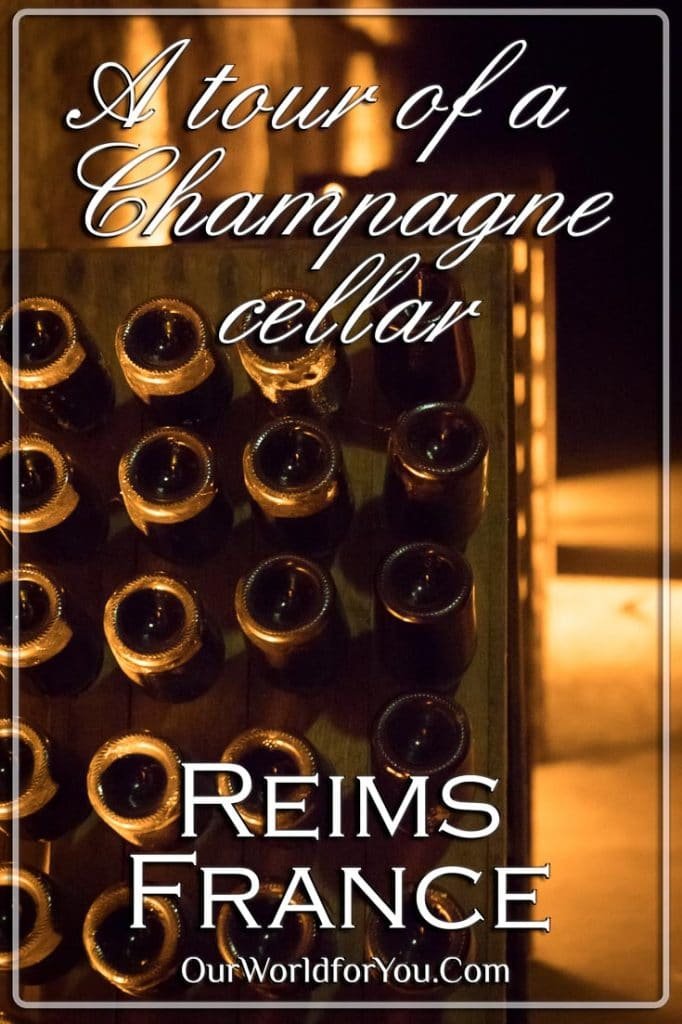
(Why not Pin It for Later?)

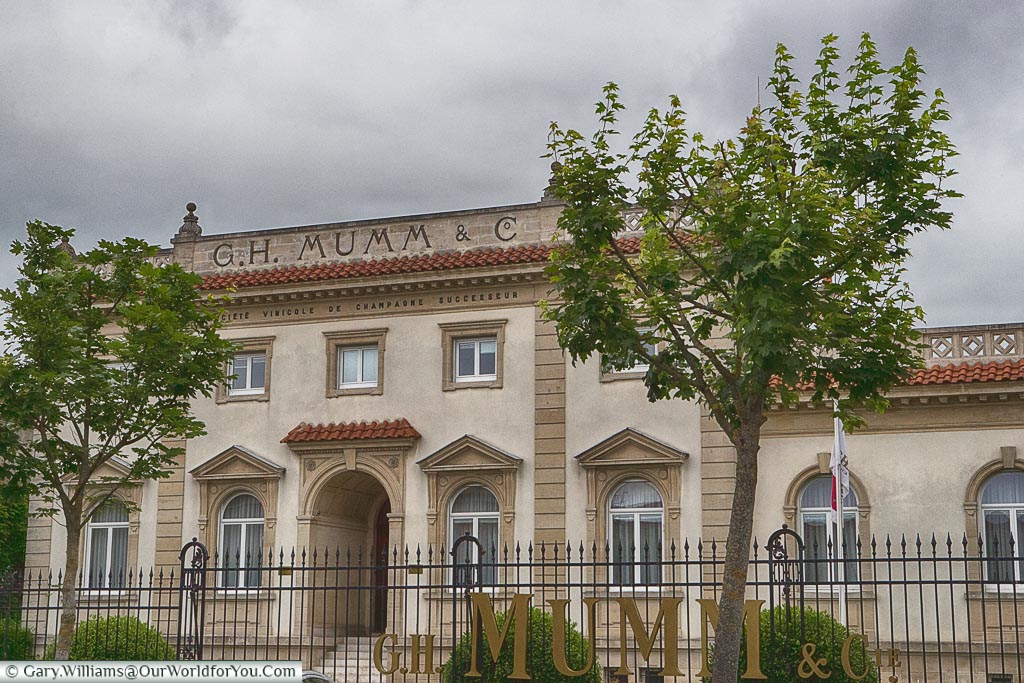
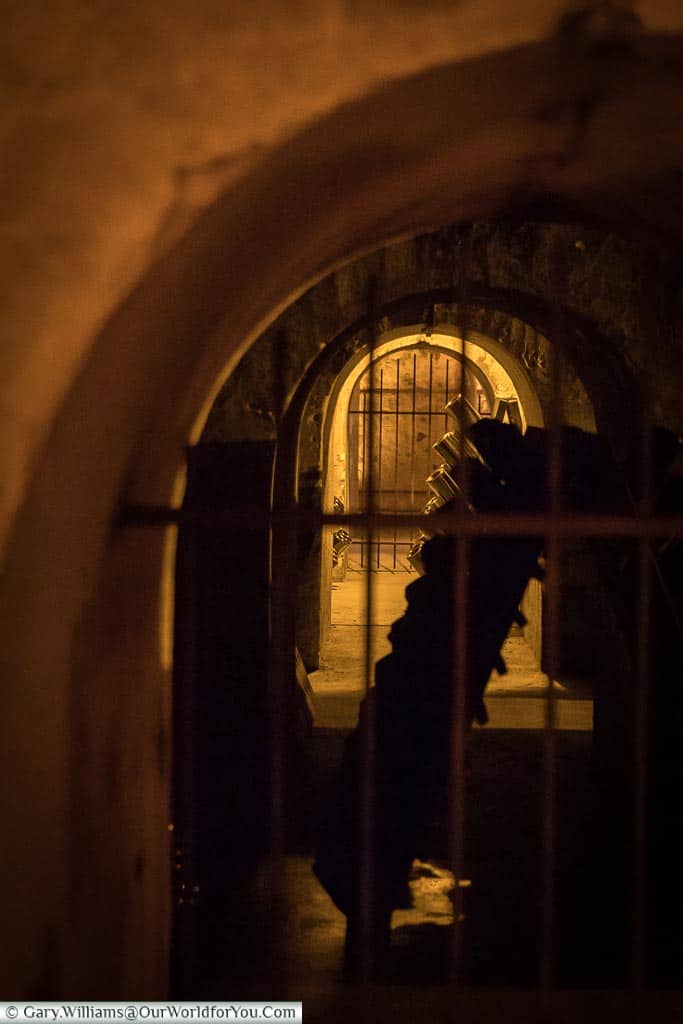
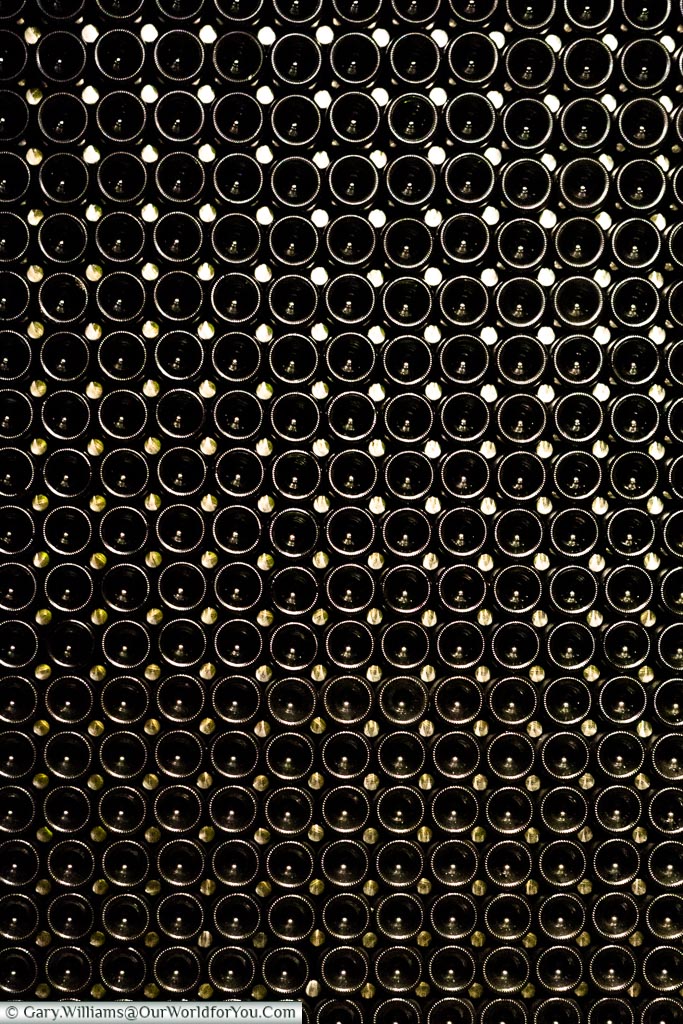
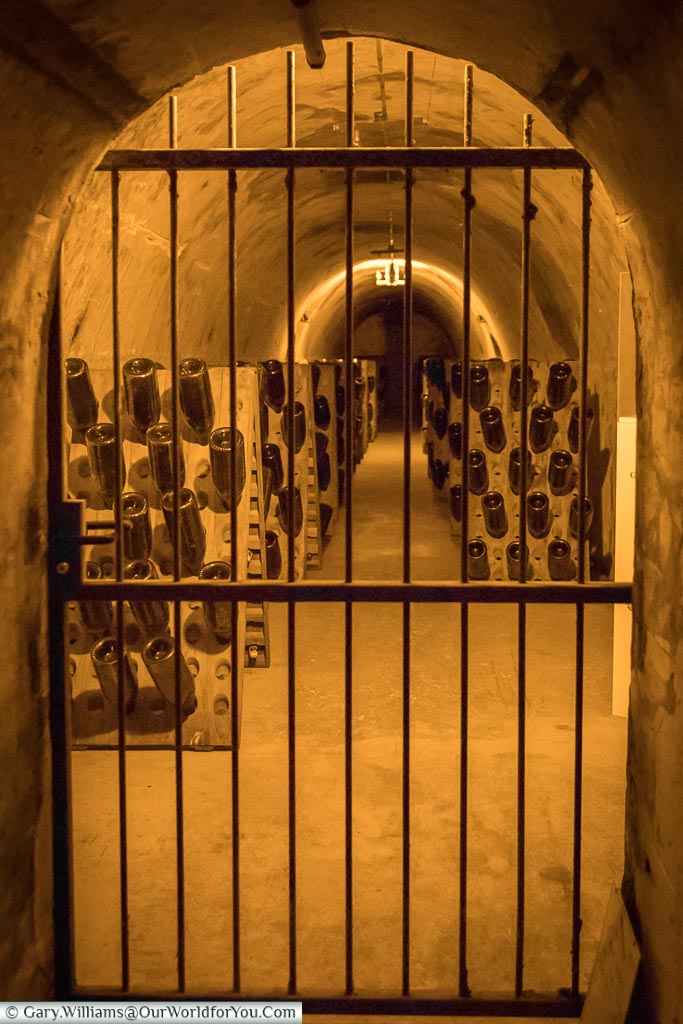
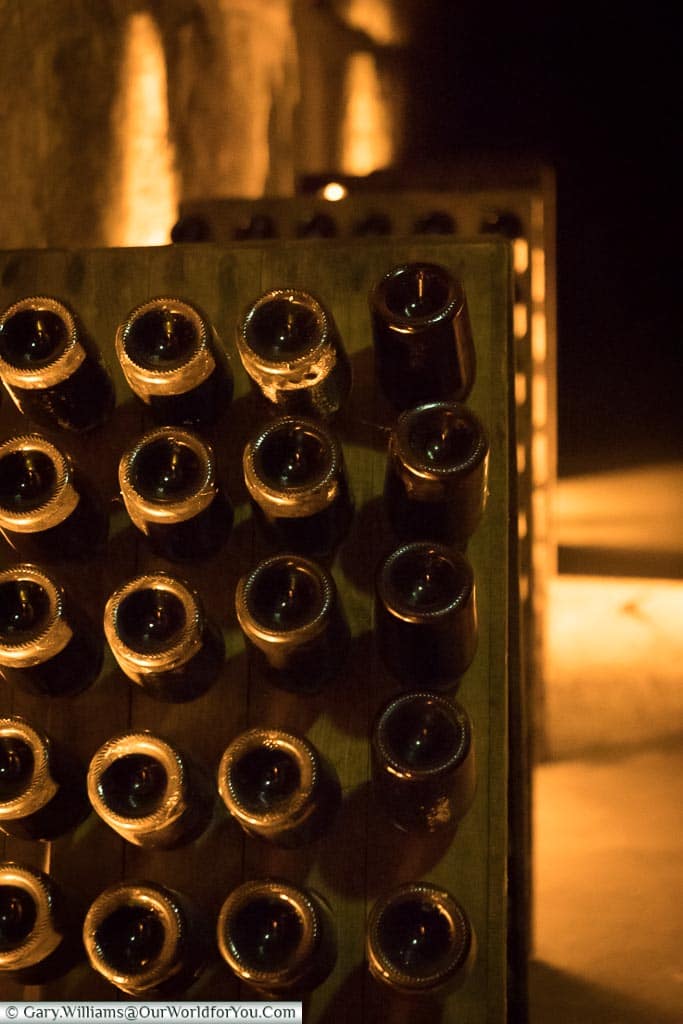

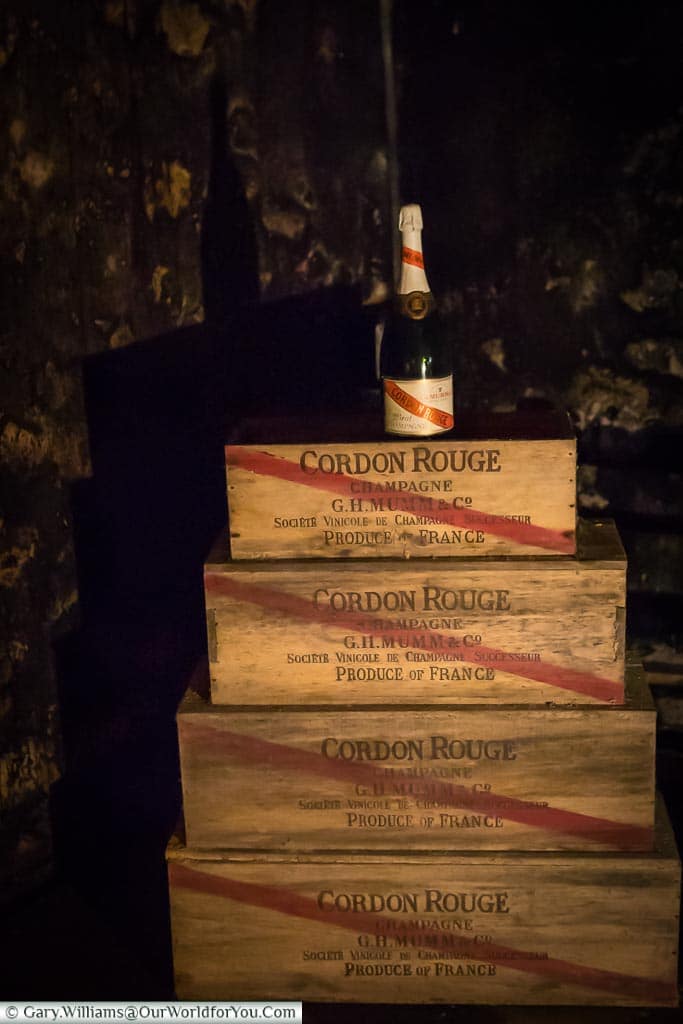
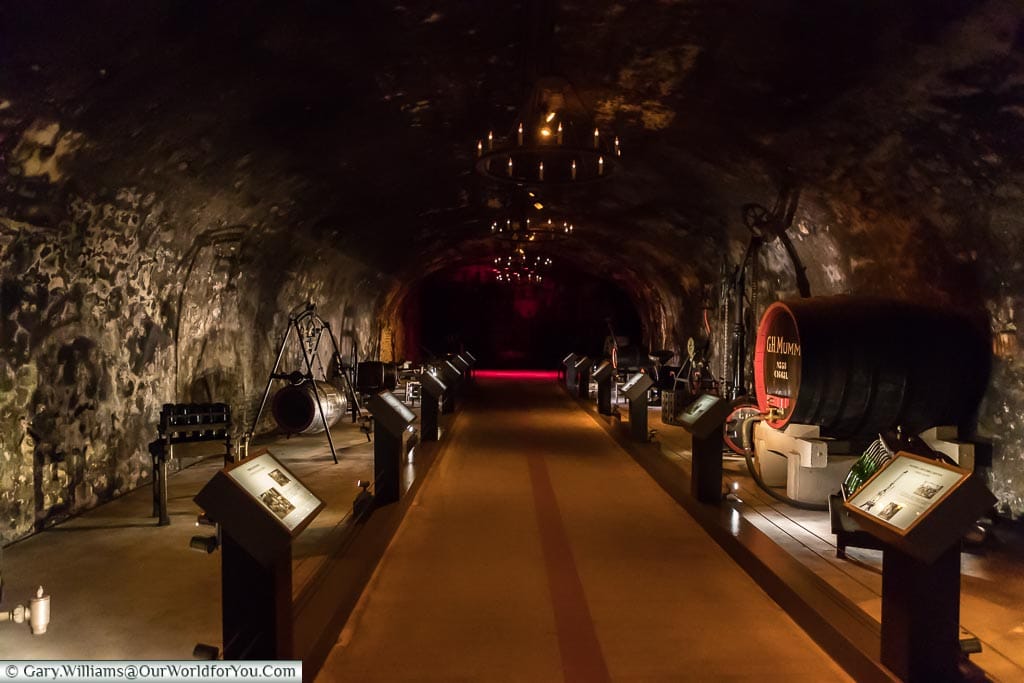



Comments
Apologies, it auto corrected my name… Enjoyed the read thank you, we’re in Reims today heading for Verzenay tomorrow. One slight amendment to your article, the red and white lines that you linked with the colours of Mumm are actually the sign that us pilgrims on the via Francigena are following from Canterbury in England to Rome.
Hi Denise,
Thanks very much for your comments and thank you for informing us about the amendment of the red and white sign of the via Francigena.
Wow, are you walking the whole route? It looks incredible; it makes the Camino de Santiago look like a walk in the park.
Have fun and take care.
Janis & Gary